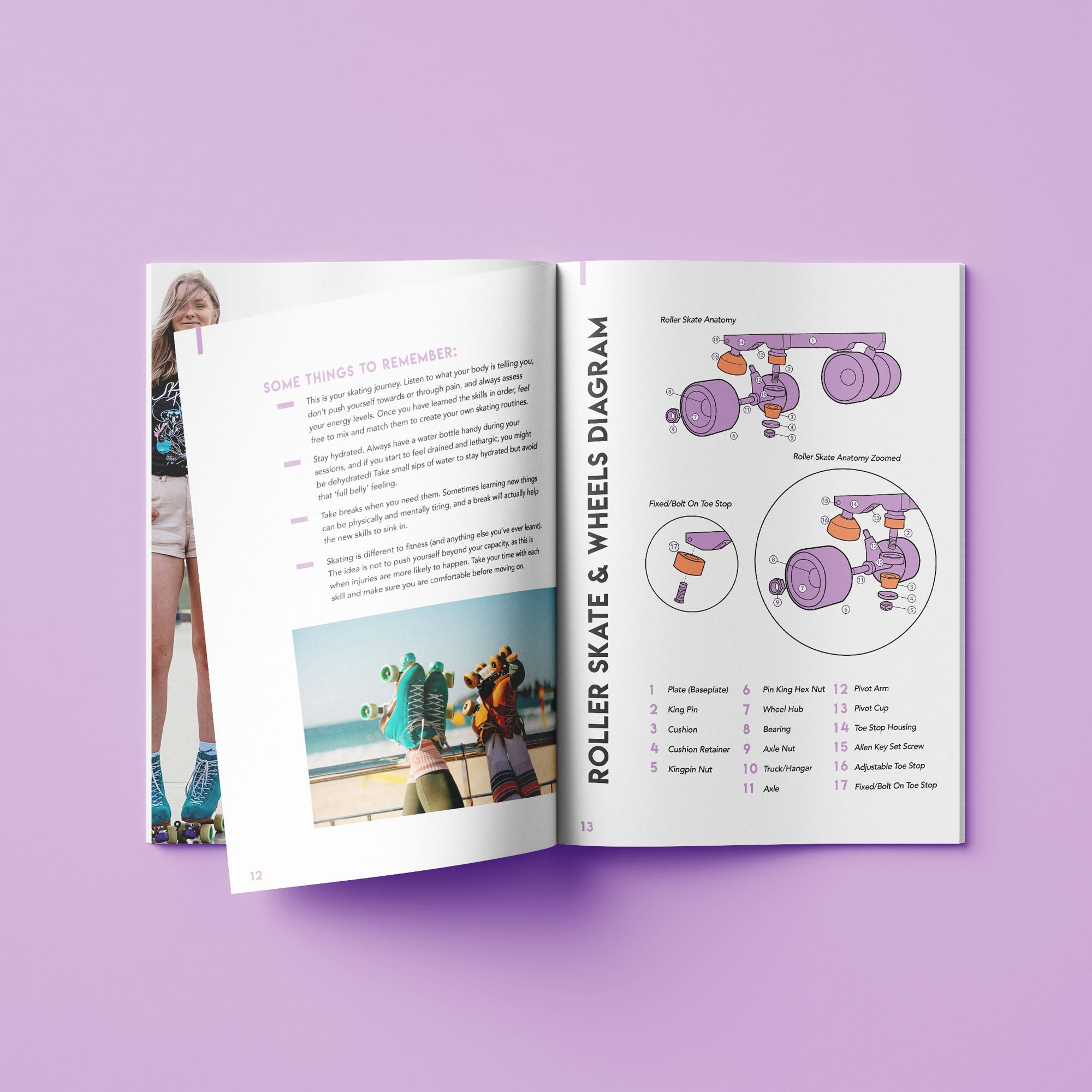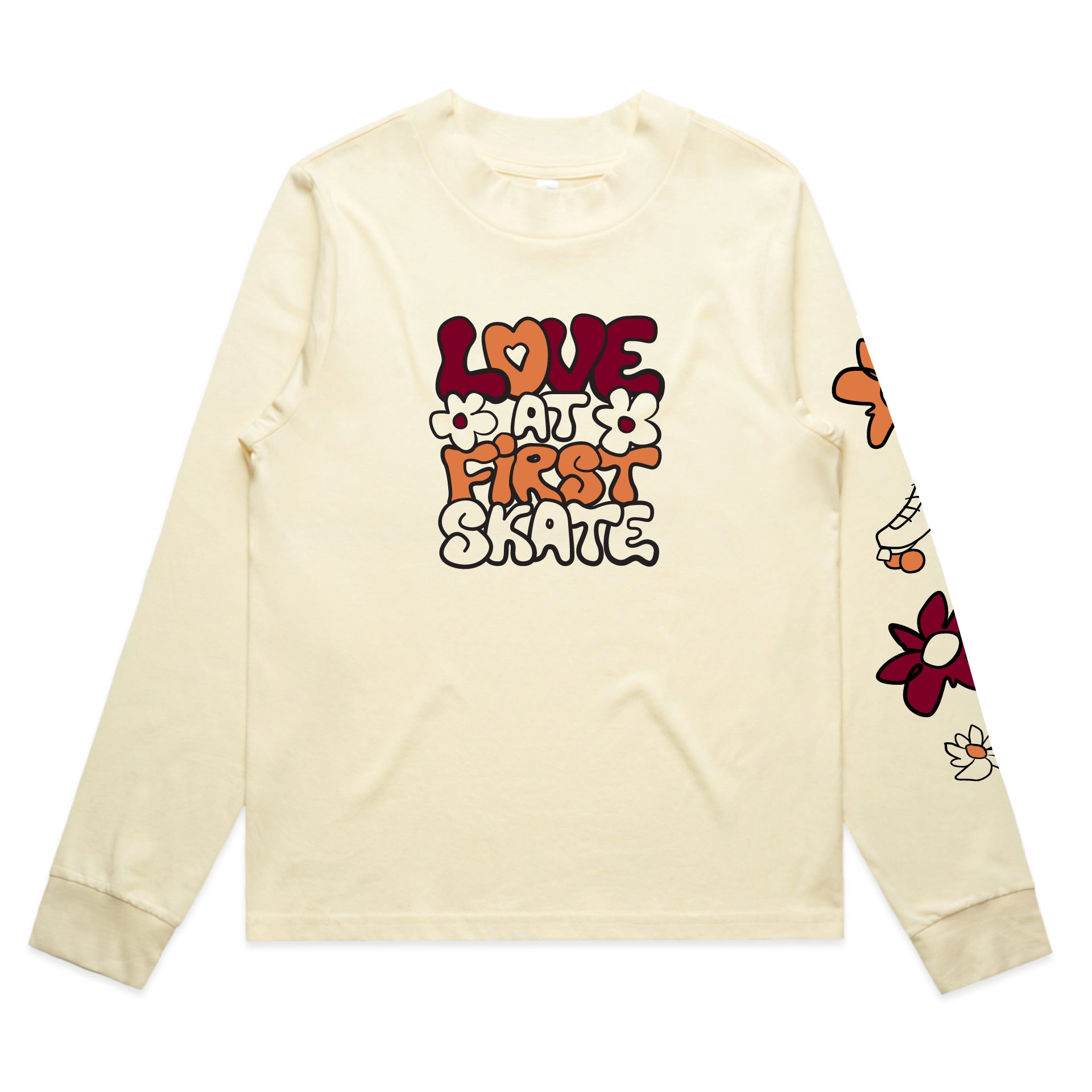Roller Skate Bearings Explained
As roller skaters, what makes us go round and round? Sure, we have 8 wheels, but nestled inside them are little things called bearings doing the hard work to make those wheels spin. How do bearings work? Do you know what kind of bearings you need for your roller skates? How do you take care of your bearings to make they sure they keep you rolling smoothly? Bearings are an underrated part of roller skates, so let’s do a little bit of learning so we can show our bearings a little love.
What are bearings?
Bearings sit inside the hub of a wheel, allowing your skates to roll. For roller skates, you need 2 bearings in each wheel, making it 16 in total needed for your set up.
A bearing has 5 main components:
- Shield – Bearings can have 1 or 2 outer shields that protect the internal parts from debris. The shield can be metal or nylon. If your bearing only has one shield, the shield should be facing outwards.
- Inner race – The part of the bearings that sits on your truck axles. Depending on your trucks, the inner race may be 8mm or 7mm in diameter.
- Balls – These are what make the bearing move and your wheels roll. They can be made of metal or ceramic.
- Retainer – This keeps the balls in place inside the bearing and stops them from falling out when the shield is removed.
- Outer race – The outermost part of the bearing that is contacting the wheel hub when installed.

What are the different types of bearings?
If you’re on the lookout for new bearings, you may notice that there’s a bit of variety out there. Bearings can differ based on size and their material construction.
Bearings for roller skates can come in 2 different sizes, 8mm or 7mm. The size refers to the diameter of the inner race and your truck axles. Most roller skate plates take an 8mm bearing, whilst Roll-Line plates and some older plates require a 7mm bearing.
When it comes to the material construction of bearings, you can choose from steel, Swiss and ceramic. Steel bearings refer to the steel balls that are standard for many roller skate bearings. Swiss bearings are usually manufactured in Switzerland, where it is considered that the manufacturing process creates the most precise and high quality bearings on the market. Ceramic bearings use ceramic balls, which are lighter than steel bearings. Swiss and ceramic bearings are generally rust resistant, self-clean, have a higher spin rate and are more durable. With their longer life span, Swiss or ceramic bearings are more expensive and considered a bit of a skate hardware investment.
What is the ABEC rating for bearings?
You’ll find that most bearings for roller skates have an ABEC rating. ABEC refers to the Annular Bearing Engineers Committee, which established a rating system to determine the tolerance, precision, and noise standards for the use of bearings in industrial settings. The system grades bearings on a scale of 1, 3, 5, 7 and 9. The higher the ABEC rating, the more precise the bearing. A higher ABEC rated bearing will not necessarily make you go faster. Instead, it’s the overall quality of a bearing that has an impact on your roll and its longevity.
Don’t get too caught up on the ABEC rating! We skaters don’t go anywhere near hitting the RPM at which these ratings would come into play, and we impact our bearings in different ways compared to industrial bearing use. Meaning, the ABEC system is not really accurate for determining the quality of a skate bearing. It is common to find that different bearings with the same ABEC rating perform very differently from one another. This is why some brands, like the iconic Bones company, do not use the ABEC system at all and instead have used their extensive experience to develop their own Skate Rating standard for their bearings and bearing maintenance products.
How often should you clean or change bearings?
Cleaning your bearings regularly is the best way to get the longest possible lifespan out of them and keep you rolling smoothly. If you don’t already have a regularly scheduled skate maintenance session in your calendar, then you may not know when it’s time to clean or change your bearings.
A telltale sign that your bearings need a good clean is if you just try to spin your wheels with your fingers and they don’t spin for at least a good 5-10 seconds. Another good indicator is if your skating is starting to feel a bit sluggish when you push. Maybe your bearings are even literally screaming for help with a squealing noise, or they are completely seized up altogether. We can be honest here among friends, most of us tend to wait until we hear the squeal or our bearing is seized before we clean them, but for the sake of your bearings (and your bank account) regular cleaning is recommended. If you are skating at least a few times a week, you should probably think about cleaning your bearings once a month.
If you clean your bearings thoroughly and still don’t get a good spin, you lose any balls, or if the balls or racers are rusted, it’s time to invest in some new bearings. You don’t need to break the bank on the most expensive and fancy bearings, but like many things in skating, price generally indicates quality. Just ensure you’re buying the correct size bearings for your plates and truck axles. We stock all our faves at the RollerFit Shop here, with our go-to being the Bones Reds.
How do I clean and change my bearings?
Cleaning and changing your bearings can seem like a chore at times but trust us when we say it’s not complicated and it’s well worth your time. You can easily find tutorials online and on your socials. This one from Moxi Roller Skates is a great one for explaining the full cleaning process. In this tutorial, well known roller skater, Rebel (aka Queer Girl Straight Skates), gives lots of helpful tips including how to use a bearing pull tool and bearing press to make the cleaning and changing process a lot easier.
Just make sure that you’re cleaning the bearings with suitable bearing solution or white spirit/mineral turpentine, letting them dry completely, then lubricating before reassembling and installing them in your wheels.
For all the tools, cleaning solutions and lubricants you could need to clean your bearings, you can find them over here.
If we haven’t answered all your bearing questions, drop us a line and ask! Happy rolling and don’t forget to take care of those bearings.




